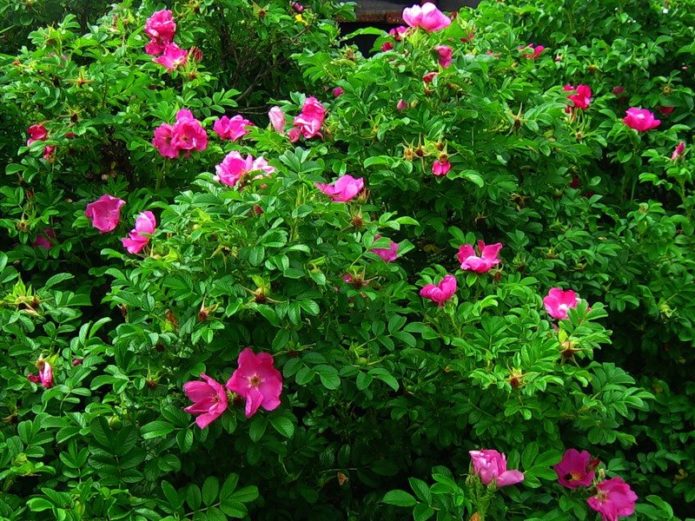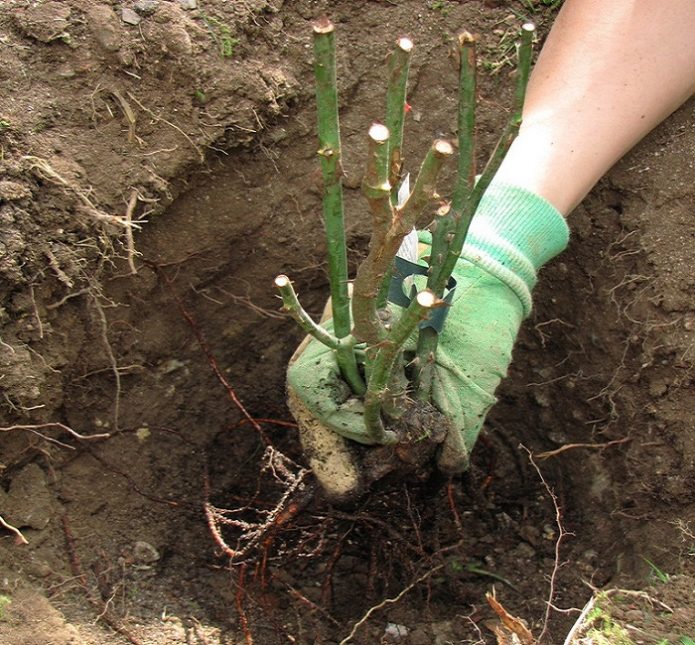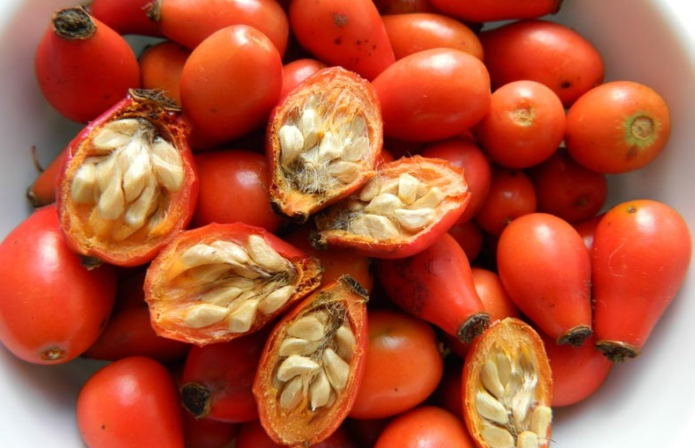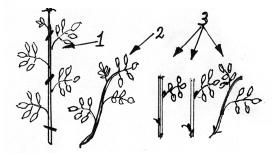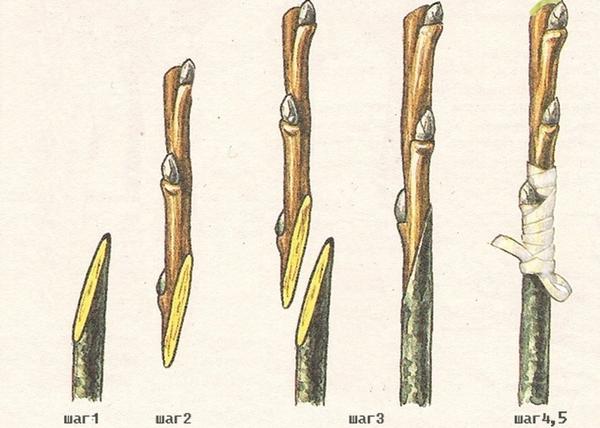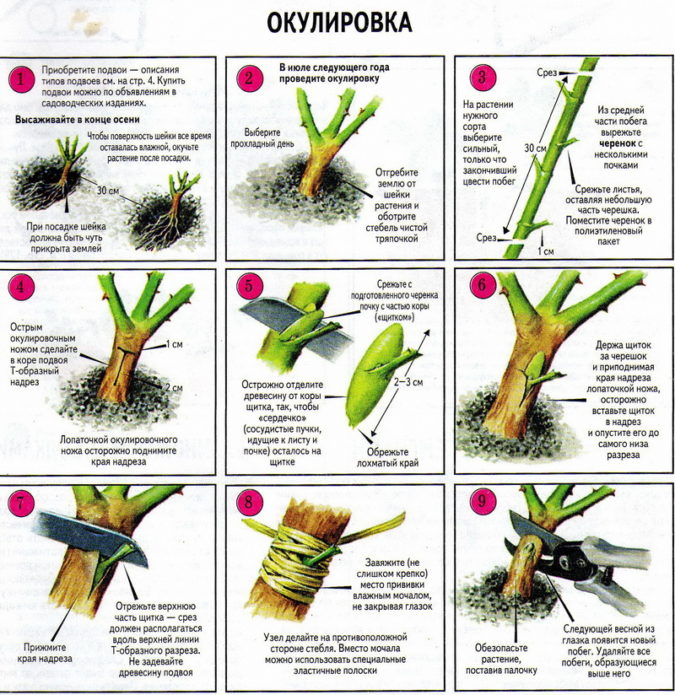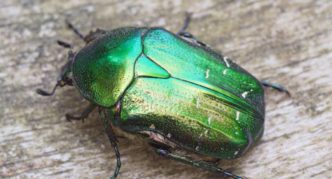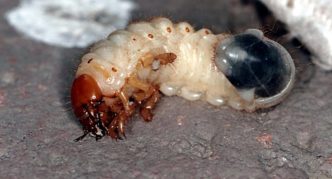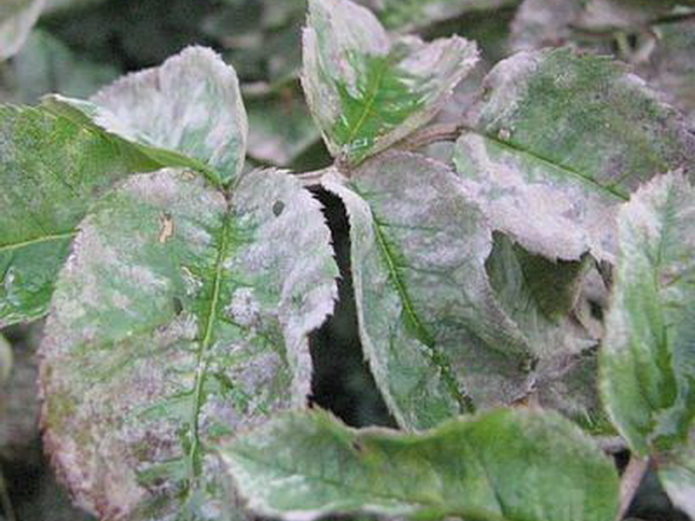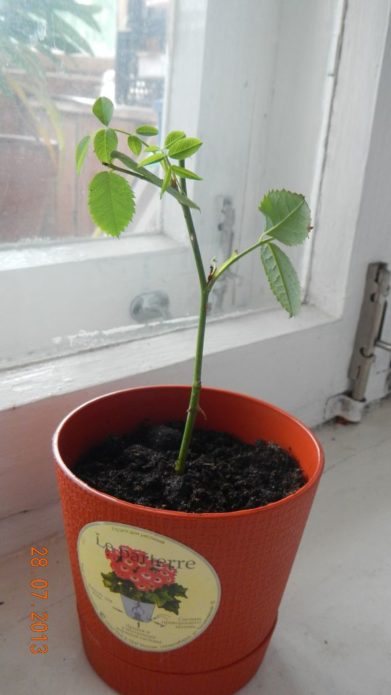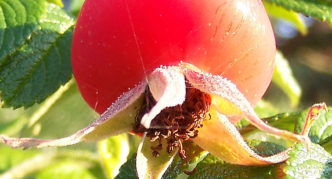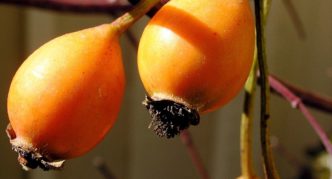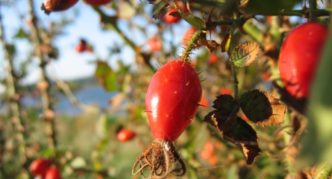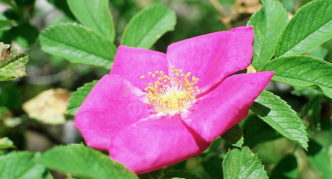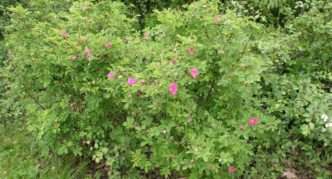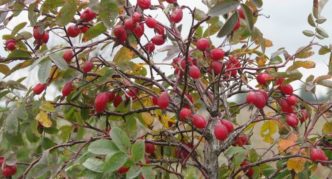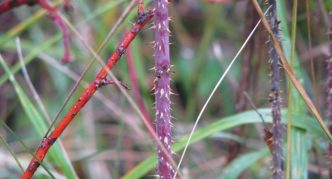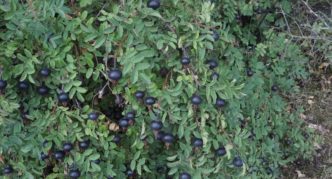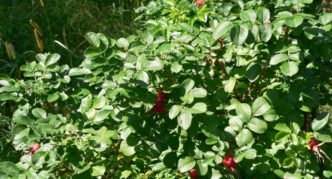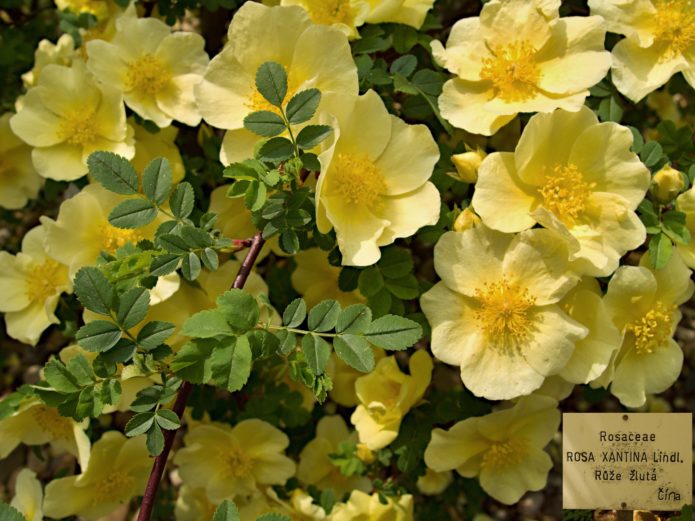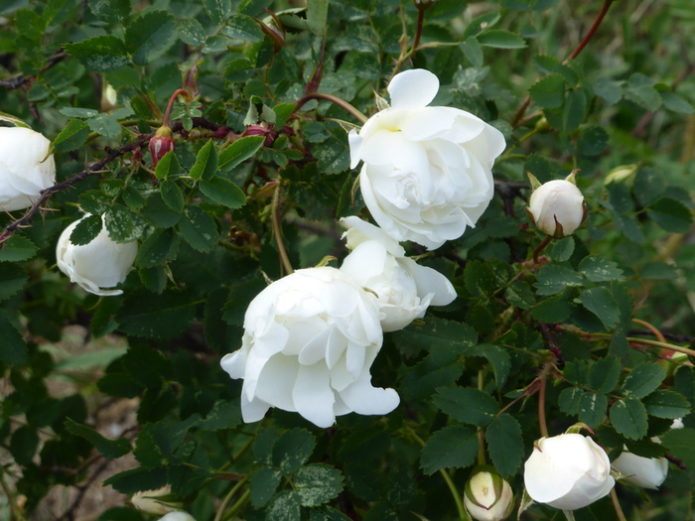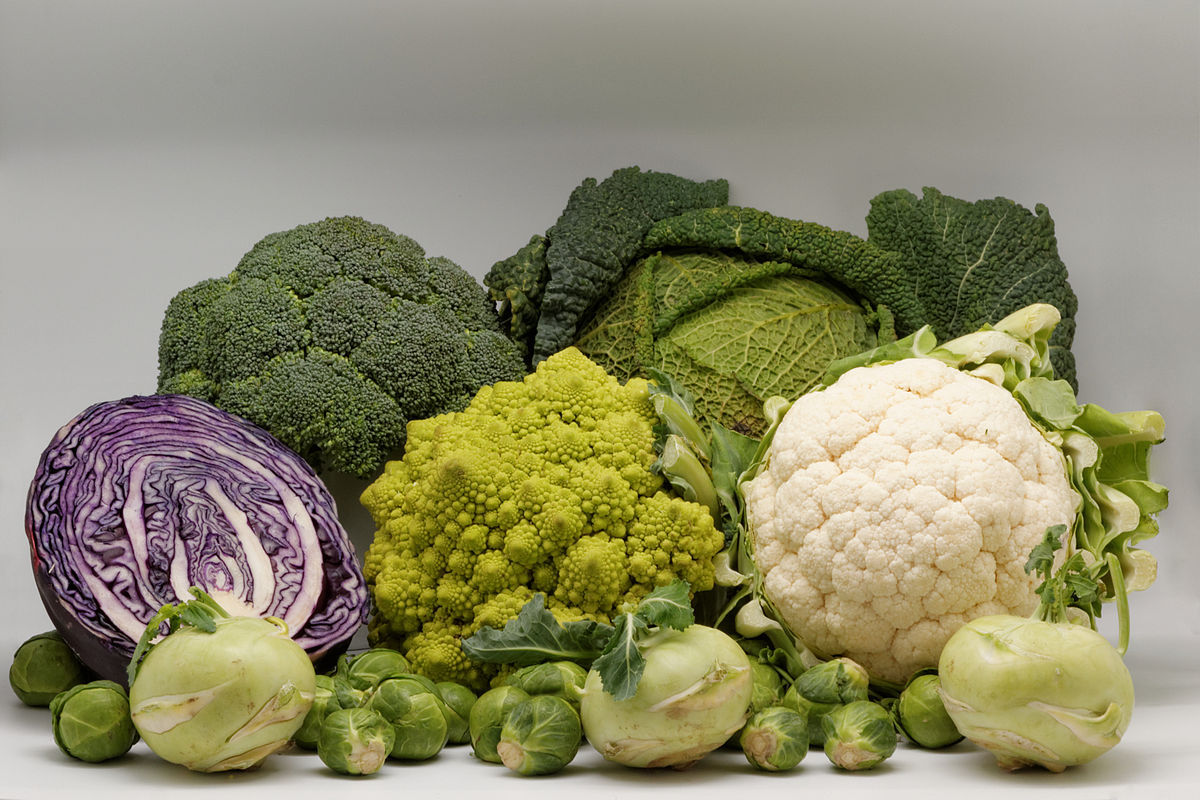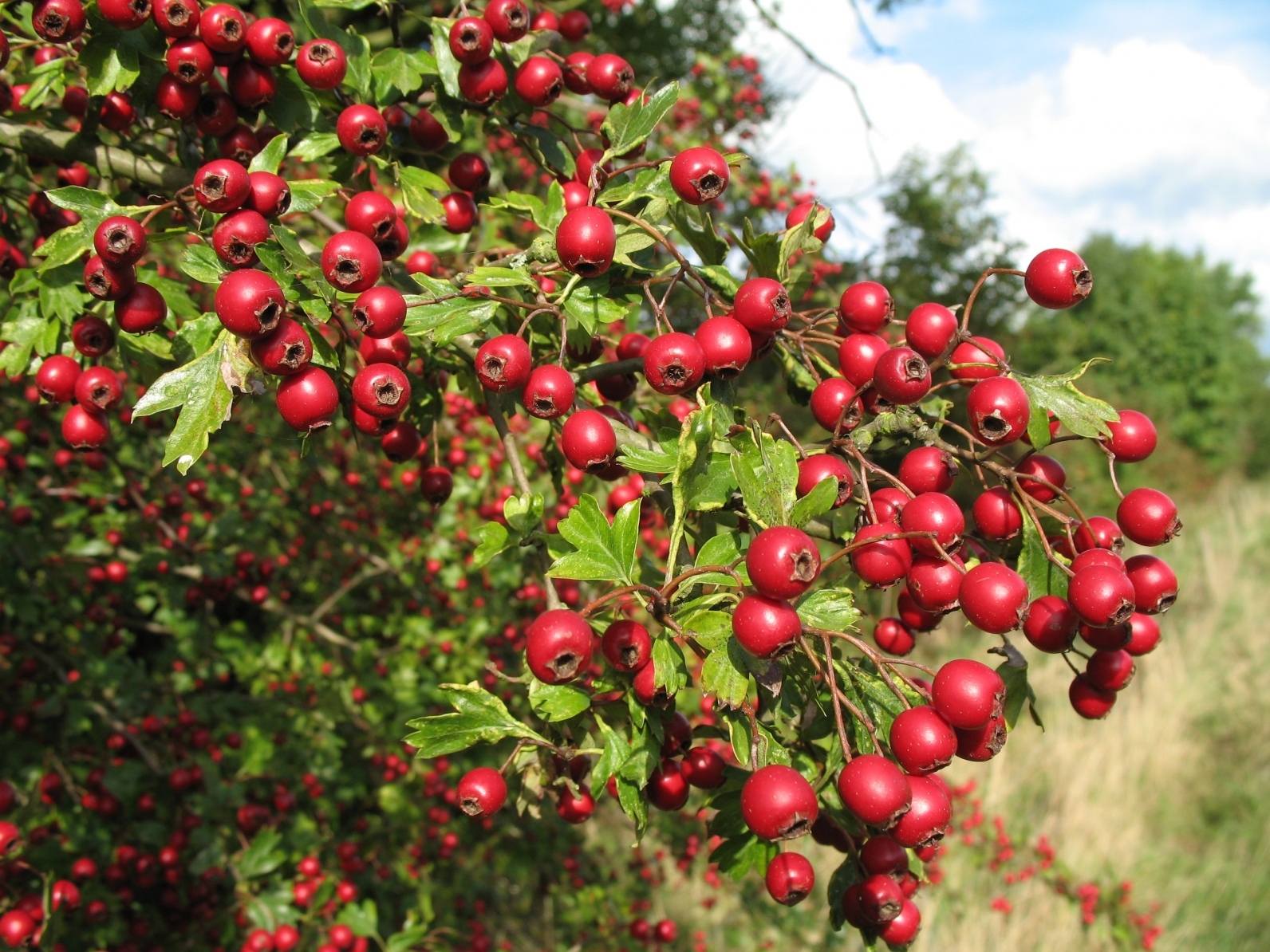Rosehip has many species and is widespread in Russia everywhere: in forests, ravines, it also likes to settle in floodplains of rivers, where it forms shrub thickets. It is valued for the high content of vitamin C in fruits, thanks to which it is widely used in medicine. In gardens, this culture is still rare, but recently it is gaining popularity. Many varieties of this useful and beautiful plant have been bred.
Content
Rosehip cultivation
Rosehip is universal: it is decorative, good for hedges and landscaping, fruits can be eaten. There are no particular problems with the cultivation of this shrub, since it is unpretentious and frost-resistant.
Choosing and preparing a place in the garden
When planting a rosehip, keep in mind that it will grow in one place for 20-25 years. Find an area that is unshaded, free from excess moisture, but not too dry. Rosehip roots go to a depth of 5 m, so in an area with a high groundwater table there is a high probability of their decay.
It is good if perennial grasses or vegetables used to grow on the site chosen for planting, under which a large amount of organic matter was introduced. Ideally, after previous crops, the area was fallow and weeded.
You can plant a dog rose both in autumn and spring. For this:
- The site needs to be dug to a depth of 25-50 cm.
- Weeds and roots of perennial grasses must be removed.
- Lime should be added to acidic soils in autumn (300–400 g per 1 square meter).
Planting and transplanting
One- or two-year-old seedlings are well suited for planting. The sequence of actions is as follows:
- Prepare a landing hole 30-50 cm deep.
- Apply fertilizers (7–8 kg of humus, 200 g of superphosphate and 50 g of potassium salt) into the hole, mix them with the ground and form a small mound at the bottom.
- Place the seedling in the hole, spreading the roots out.
- Compact the soil around the seedling so that there are no voids around the roots.
- Cut off the outside, leaving 15–20 cm from the ground.
- Water well (up to 10 liters per bush).
- Mulch the bust circle with peat, bark, sawdust.
Bush care
During the growing season, you need to thoroughly clean the bed of weeds. Digging up the earth under the bushes in autumn and early spring to a depth of 10-15 cm will help in this, in the rest of the period - loosening.
Frequent moistening of this shrub is not necessary, only in dry summers you can water 2-3 times during the season at the rate of two or three buckets per plant.
Rosehip responds well to fertilizing, we add them three times per season:
- in early spring - 2-3 kg of manure or compost for digging per 1 m2 or 20-30 g of ammonium nitrate or urea per 1 m32;
- in June - July - feeding with infusion of mullein (1:10) or bird droppings (1:10);
- in autumn - 30-40 g of superphosphate and 15-20 g of potassium salt per 1 m2.
The indicated dosage is suitable for fruiting plants; for young plants, we reduce it by half.
Pruning and shaping the bush, including in spring
The main skeleton of a shrub is formed in the first year, by pruning branches into 4–6 buds. In the future, in early spring or autumn, all broken, dried and diseased branches are removed. Young basal shoots are shortened to 60–70 cm, and 6–7-year-olds are cut off. The formed rose hip bush should consist of 10-15 branches of different ages.
If the bush has been thickened for a long time, you can carry out anti-aging pruning, shorten all branches to 15–20 cm.
Rosehip breeding
There are several ways to get new bushes: seeds, green cuttings, division. Reproduction by grafting and budding is also used.
Seed reproduction
Seeds must be collected from unripe fruits, washed and dried. It is better to sow in late August - early September, so the seeds will undergo natural stratification. Sowing should be at a depth of 2-3 cm. In the spring, seedlings are thinned out and spread out onto ridges. Two-year-old seedlings with a height of 30 cm will be ready for transplantation to a permanent place.
Propagation by green cuttings
For the preparation of green cuttings, annual shoots are used. Work order:
- Cuttings are cut in June from 4-7-year-old bushes. Each cutting should have 2-3 internodes.
- The lower leaves are removed, and the upper ones are cut in half.
- To prevent diseases, cuttings are etched in a solution of a fungicide, for example, copper oxychloride, and the base of the cuttings is powdered with Kornevin biostimulant powder.
- Planted at a slope, compact the earth next to the handle and watered.
Requires warmth and moisture for successful rooting... Such conditions are provided by small greenhouses, which are easy to equip with your own hands.

A greenhouse for rosehip cuttings consists of soil (1) - a mixture of peat and sand; frame (2) covered with polyethylene; shading fabric (3)
In September, rooted cuttings with a clod of earth are transferred to the nursery for growing and covered for the winter. The seedlings will be ready for transplanting at the age of two.

In winter, grown up rosehip cuttings are grown in the nursery: 1 - shoots that have grown over the summer; 2 - support; 3 - slats; 4 - lutrasil
Dividing the bush
The most common way of breeding rose hips is by dividing the bush, it is best to use a 5-6 year old plant. The procedure is carried out in the fall, no later than 2-3 weeks before the onset of frost, so that the dog rose has time to take root. You can use two methods:
- First way:
- dig out the whole bush;
- carefully examine the roots and the outside;
- with a shovel or knife, separate into parts with the rhizome, choosing young shoots with a developed root system. Each part should contain 2-3 young shoots, which are cut to 15-20 cm;
- cut the sections with crushed wood or activated carbon;
- immediately plant new bushes in a permanent place.
- Second way:
- dig in a bush on one side;
- Separate one part with a shovel and transplant to a new place, cutting and processing the roots, as in the previous case.
Reproduction by grafting and budding
The use of this method is available to experienced gardeners. It should be used if you want to plant a cultivar on a wild rosehip, perhaps several varieties at the same time on different shoots of a bush..
The plant to be propagated (scion) is grafted onto the root system of another plant (stock). In this case, all the properties of the grafted plant are preserved. One of the easiest ways is copulation. It is carried out in early spring, before the start of sap flow, thus:
- Cut with a clean knife at an angle of 20-25 °.
- The branches are tightly pressed against each other at the cut site and wrapped with a strip of plastic wrap.
If in 2-3 weeks the kidneys begin to grow, then the vaccination was successful.
Budding is also reproduction by grafting, only one bud is used as a scion. Most often, roses are grafted onto the rosehip root system by budding.
Video: grafting a rose on a rosehip
Protection against diseases and pests
Such pests bring troubles to the planting of rose hips:
- strawberry-raspberry weevil - affects plant buds;
- bronzovki, lamb, caterpillars of leafworms, ringed and unpaired silkworms - spoil the buds and leaves;
- larvae of May beetles, click beetles, gray root scoops - eat up the roots;
- rose fly - damages fruits, and 8-10-year-old bushes suffer more.
Photo gallery: some rosehip pests
- The strawberry-raspberry weevil eats the rose hips
- Bronzovka affects the buds and leaves of wild rose
- May beetle larva spoils rosehip roots
The shrub can be affected by the following diseases:
- powdery mildew,
- black and white spots,
- rust,
- viral diseases.
You can protect the plant using the following measures:
- In early spring, we spray it with a 5% solution of ferrous sulfate (once every 3-4 years) to destroy harmful insects and prevent fungal diseases.
- In April, we cut and burn dry and diseased branches, dig up the ground under the bushes to a depth of no more than 10-15 cm. We do this annually, starting from the second year of planting.
- In the beginning - mid-May, we spray with 0.2% solution of Karbofos to combat insects, their larvae and caterpillars.
- At the end of May, we treat with a 1% solution of Bordeaux liquid for the prevention and treatment of diseases.
- In mid-June (the beginning of flowering) and again at the end of the month we spray the rosehip bushes against the rose fly with a 0.2% solution of Chlorophos.
Beginner tips for growing rose hips
The unpretentiousness of the plant will ensure success even for inexperienced gardeners, subject to the basic rules of agricultural technology of this plant. Of the features, it can be noted that the roots of the dog rose spread out in breadth, therefore, if you cannot allocate a lot of space for it, dig in a slate or border tape 30-40 cm high along the border of the plantings.
Video: growing rose hips, useful properties, collection
Features of growing rose hips in closed containers on the street and at home
As mentioned above, the dog rose has a taproot, which grows strongly both in breadth and in depth. In a closed container, including a container, he will be cramped. If you still dream of growing this plant in an enclosed space, choose a tall and wide container.
It is also impossible to create the required conditions for this shrub at home, it is not a houseplant. You can experiment with growing rose hips from seeds. It will be appropriate to keep it at home in a large pot up to a one-two-year-old seedling, and then it is wiser to transplant it into open ground..
Of course, it is possible to grow a small bush in a pot, but such flowering as in a garden cannot be achieved.
Types and varieties of rose hips and features of their cultivation
There are many cultivars and species of rose hips. They differ both in the color of the buds and in the shape, color and size of the fruits. There is a rosehip with orange, red and even black fruits.
Photo gallery: variety of rose hips
- The fruits of the wrinkled rose hips are round, red
- Californian rose hips are orange, pear-shaped
- Fruits of a red-brown oval rosehip
- The drooping rose has thorns
Rosehip species
There are many types of decorative rose hips, consider the most famous of them.
May rosehip
This is the most common type of plant. The fruits are rich in vitamin C and are used as food and also as a medicine. Due to its unpretentiousness and winter hardiness, it is used in urban greening. Blooms from May to July, fruits ripen in August - September.
Photo gallery: species of wild rose may
- May rose hips are large, with five sepals
- Rosehip May is suitable for use as a hedge
- May rose hips contain 10 times more vitamin C than lemons
- The thorns are located on the lower part of the branches of the May rose
Rosehip prickly
In its natural form, it is distributed in Siberia and Central Europe, interesting for the blackish color of the fruit. In the middle lane, its garden form is grown with double flowers that have a strong aroma.
Photo gallery: species of wild rose thorny
- Rosehip petals prickly white or yellow-white
- In a mature state, the fruits of wild rose are blackish
- Thorns of prickly rosehip are longer than the leaves themselves
- The fruits of the prickly rose hips are black.
Rosehip wrinkled
This is a bush up to one and a half meters high. In Russia, it grows in the Far East. Can be cultivated as an ornamental plant, as a source of berries and as a hedge. Blooms in June-July, may bloom again in September-October. The leaves are covered with wrinkle-like veins, hence the name of this species.
Photo gallery: wrinkled rosehip view
- Rose hips are wrinkled flattened, bright red
- Rosehip wrinkled blooms in large flowers of different shades
- Rosehip wrinkled grows up to 1.5 m in height
Rosehip varieties
Many varieties of this representative of the Pink family have been bred.
Vitamin
One of the most popular cultivars is Vitaminny rosehip. Bred at the All-Russian Research Institute of Medicinal and Aromatic Plants. The berries are large, contain a large amount of vitamin C. Up to two and a half kilograms of berries can be harvested from one bush, and there are no thorns at the location of the fruits, which simplifies harvesting.
Yellow variety Xanthine
This is one of the most decorative varieties of rose hips with an unusual color. The bush reaches a height of two and a half meters. The flowers are large, up to 5 cm in diameter, semi-double. Blossoms in May - June; scarlet fruits ripen in September.
In memory of Hasanov
This is an ornamental variety of rose hips with large white flowers, combined in inflorescences of 6-9 flowers. The bush is medium-sized (height 1.5–2.0 m), 1.5 m in diameter, slightly spreading. Recommended for landscaping in Krasnodar and Stavropol Territories, Rostov Region, also suitable for industrial processing.
Studless grades
Breeders have bred studless varieties of rose hips, which are convenient for care and collection of fruits.They are not completely devoid of thorns, but they have very few of them. These are the following varieties:
- Shipless,
- Grushenka,
- Yadwiga.
Features of growing rose hips by region
Rosehip in Russia is widespread. Such a property as frost resistance allows this plant to be grown in Siberia and the Urals, where cold winters are frequent. Drought resistance makes it possible to plant wild rose in the southern regions with hot summers, including the Crimea. In the European part of Russia, he withstands return frosts, but does not like rains, which are not uncommon in summer in this region of our country. In a rainy summer, this culture is not watered.
Plant a rosehip in your area. You can transfer your favorite plant from the wild to the garden or purchase a zoned plant in the nursery. The bush is beautiful at the time of flowering and fruiting, and has no equal in the content of vitamin C.
